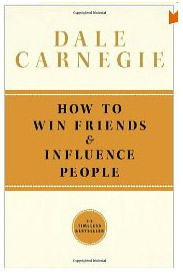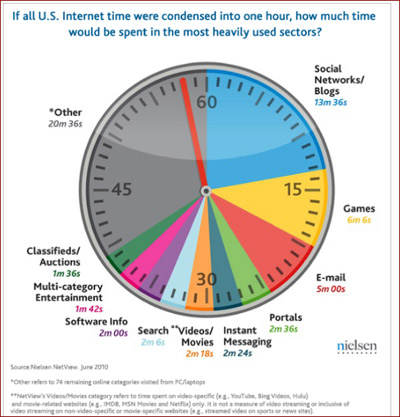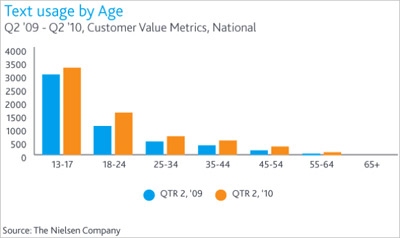About Thinking Creatively
Thinking Creatively is about taking a step back... when you want or need to think strategically and creatively about your business... or about your customer's business... or about a solution to a challenging business problem. The goal is to be one part inspiration and one part motivation. We hope to provide - over time - thought-provoking advice, tools, ideas and company profiles that help get you to your next breakthrough. Your feedback and interaction is invited, welcomed and encouraged.
Thinking Creatively is made possible by the support of GMC Software Technology. Normally such features are for "Premium Members" only. However, because the topic is so timely and essential to all executives in the industry we asked GMC Software Technology to provide support for this series. Their support allows us to to present these articles free for all WhatTheyThink.com members.
In a world where text messages outnumber mobile phone calls...and social network usage eclipses email…and customer service has turned into self service…it’s time to reconsider the very nature of conversation. In particular, I’m talking about “the commercial conversation”.
This is the dialogue that plays out hundreds of millions of times a day between a merchant/business and an individual they are or want to do business with. The interactions can be super brief (as in 10-20 characters) or they can last days, weeks, months and years. In short, the nature of conversation is being revolutionized.
The goal of this article is to insert a pause into your work designing, producing and delivering commercial communications – to have you reconsider things you might have taken for granted. Below are some thought starters – some old school basics to apply to new world realities – all designed to help you bring fresh insight to your clients.
The payoff? If you make one good suggestion to a client on design, format, copy or communications approach, it can win you a project over a competitor. It can also help you retain a client who has been questioning your “added value”. Plus, a fresh perspective is likely to improve the responsiveness and results of the communications you’re delivering.
In the end, it is about offering your creativity and expertise to clients to improve their business…and yours as well.
Focus on the very essence of a conversation vs. a communication.
It is important to draw the distinction between conversations and communications. According to merriamwebster.com, conversation is defined as: “1. An oral exchange of sentiments, observations, opinions, or ideas; 2: an instance of such exchange.”
Contrast that to the definition of communication: “An act or instance of transmitting. a: information communicated b: a verbal or written message.”
What we are talking about is the difference between an “exchange” vs. “transmittal.” When you focus on having a conversation vs. delivering a communication, you look for ways to engage people…to request a response…to make sure you connect.
In landmark research on the subject of “conversation analysis”, a foundational paper was written describing “turntaking.” Written jointly by Harvey Sacks, Emanuel Schegloff and Gail Jefferson, the paper established an “economy of turns,” and preferences related to turntaking orders, as basic organizing features of conversation (http://www.encyclopedia.com/doc/1G2-3045300452.html).
The Lesson? As you prepare the very next job you’re working on for a client, simply ask: “Is this the start or continuation of an exchange?” And if not, look to insert some device that keeps the conversation going.
 |
| How To Win Friends & Influence People |
“Bait the hook to hook the fish”.
In a 1936 book that has had a profound impact on millions of people -- Dale Carnegie’s “How to Win Friends and Influence People” – Carnegie offers an obvious but compelling suggestion for engaging people. When you go fishing, do you put chocolate or strawberries on the line to catch a fish? No, that might be what you like. You use worms. Worms are what the fish want.
Dale Carnegie exhorts us as follows: “Talk about what they want and show them how to get it”. In the book, Carnegie tells the story of engaging a botanist at a dinner party. After listening to the botanist intensely for hours, at the end of the party, the botanist tells the host: Mr. Carnegie was “most stimulating” and calls him “a most interesting conversationalist”. To which Carnegie responds, “Why, I had hardly said anything at all.”
In all my years of creating and managing communications and conversations, the most frequently committed error is not taking the customer view…having copy that speaks me/us/we, vs. being all about YOU.
The key takeaway: Do a double check on each piece of communication; make sure the dialogue is not all about the merchant. Make sure it is all about what the customers want…offering them a true benefit…and then showing them how to get it.
Think about how to carry your conversations across channels.
How many times in your life has a greeting card prompted a phone call to the sender…to thank them for their message? What about the text message that confirms the meeting invitation received via email? Or the phone call that starts on a cell phone…but then is continued when your caller reaches home and calls you back from the landline?
The conversation that traverses across channels is a natural occurrence in our personal lives. And with today’s “plugged in world”, when the goal is commerce, we need to create ways to “jump channels” in our commercial conversations.
For one view of the changing nature of conversation, take a look at this chart from Nielsen about how people are spending their internet time. Note that the average person spends 2.5 times more on social network/blogs than email. And when you look at social networks, email and instant messaging, you have over 20 minutes of interaction time online per hour. This doesn’t even count gaming time, which often includes multiplayer activity.

For another view of the changing nature of conversation, look at the dramatic increase in the use of text messages in the chart below. Yes, teens on average are sending or receiving 3,339 texts a month. That’s more than six per every hour they’re awake – an 8 percent jump from last year. Adults are growing steadily in their use as well.

So make it a practice to offer your clients a text message or mobile option for responding to a printed piece or an email. Or set up a Twitter account specific to a campaign, to get a conversation going with those users. Or even consider offering a specialized call center function designed to engage people with a more human touch.
The benefit? By extending the conversation, you’ll find ways to capture more insight about each recipient…while selling some add-on work that will reap dividends for your client.
I hate being ignored…don’t you? Don’t let time lag when responding in your commercial conversations.
If you are working on lead generation programs… or if your client’s project asks people to purchase or respond in any way… the old rules no longer apply.
It used to be we could wait 24 hours, maybe even a few days, before getting back to people. No longer. Here is a case from a company running the site gotnovacancy.com (a service for landlords to help them rent out apartments). First, their research shows that 84% of renters search the internet for housing. Second, actual lease conversion statistics show a 576% closing advantage if a prospect is contacted within two hours, versus waiting eight hours or more. http://www.gotnovacancy.com/pages/case-studies.asp
The result? This is 5x more sales. Imagine being able to offer that improvement to your clients!
Think differently about commercial conversations…think more about listening.
Listening is a lost art in today’s world. Yet, most would agree that those with the best listening skills probably have better conversation skills, as the Dale Carnegie example above proved.
For a new way to think about listening, take a moment to learn about “Kanji Listening.”

http://www.squidoo.com/the-lost-art-of-conversation
There are five characters that make up the Japanese word "to listen." This symbol says that we must listen with our eyes (body language), ears (words), mind (think about what is being said), attention (focus) and, most importantly, heart (empathy).
For a deeper explanation of each element, the Peace Learning Center has an interactive graphic. It is well worth the time to reacquaint yourself with the power of listening.
The bottom line? The quickest way to engage someone in conversation is to be a great listener. Try recommending a call center test to your clients. Suggest they throw out the old scripting they traditionally use and focus on drawing in customers to more dialogue, or exchange. People will be surprised, delighted and disarmed. Which makes a hospitable environment to do business…creating more satisfied customers in the long run.











Discussion
By Sherman Rawding on Nov 03, 2010
What a great article. As printers/marketers, we are now looking for ways to turn marketing into conversations. Your article is a reminder of what the essence of conversation really is. A whole lot of listening!
Discussion
Join the discussion Sign In or Become a Member, doing so is simple and free